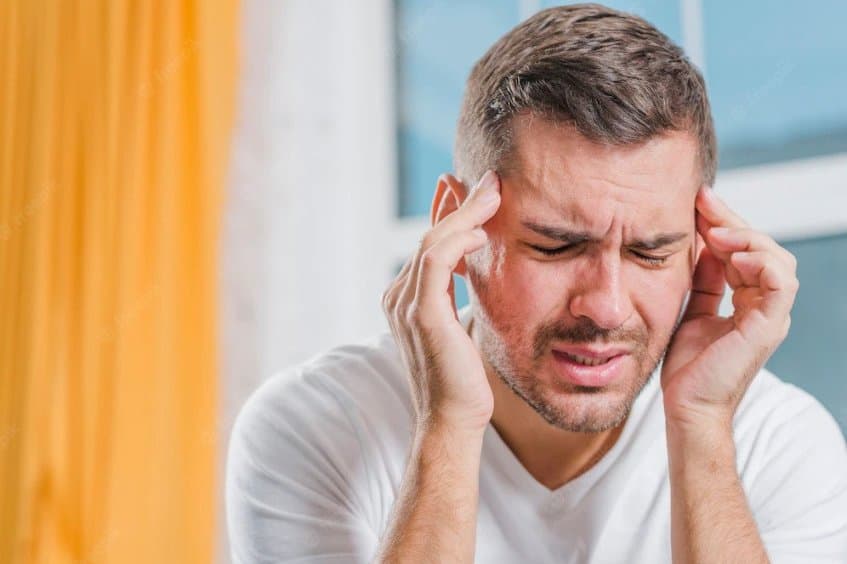Vertigo is a common pathology in a large percentage of the population and its symptoms can be treated to improve quality of life. Each patient can present different types of vertigo and for each of them it can be treated using not only drugs, but also improving lifestyle. We care about your well-being, which is why we have prepared this guide to treat and solve your vertigo problems, no matter how complex they may seem.
What is vertigo?
From the clinical point of view, vertigo is a sensation of disturbance of body balance and its origins may be due to several additional diseases. The systems that make up the human body are altered and cause many discomforts and sensations, mainly dizziness. As expected, vertigo is not a single symptom; therefore, it is accompanied by the so-called vertiginous syndrome.
The sensory and motor systems lose their balance for different reasons, causing vertigo to appear and blur or lose sight for a moment.
Why do vertigo occur?
They are produced by the imbalance of one or more body systems, making blurred appearances of the objects around us. In general, vertigo is caused by the alteration of the neuromuscular systems peripheral to the spinal cord, the visual system, the cerebellum and, above all, by the sensory-motor systems that make up the cerebral cortex. Many of the vertigo pathologies are associated with the consequences of poorly treating vision problems when you are a child.
It is clear that what produces vertigo are imbalances of peripheral origin as well as those of central origin. Depending on the symptoms and studies carried out by the doctor, the patient can have an improvement of up to 90% by following the appropriate treatment.
What are the symptoms generated by vertigo?
Before mentioning the symptoms, it is necessary to clarify that these can occur both together and individually; so having fewer of them doesn’t mean you don’t have the condition. The majority of patients arrive at the offices with dizziness, vomiting, hearing problems, paleness, nausea, excessive sweating and even nystagmus (involuntary spasmodic movement of the eyeballs).
Many of the problems of vertigo are solved after knowing that you have myopia or astigmatism, because this can also cause the trigger of vertigo.
How many types of vertigo are there and which are the most common?
There are only two types of vertigo, peripheral and central, of course the most common is peripheral, reaching up to 80% of all diagnoses.
Many confuse dizziness with the first symptoms of pregnancy and therefore go to the doctor after learning that they have not conceived. Now, quickly, it can be said that peripheral vertigo is common in patients over 40 years of age and presents symptoms of hearing loss. While central vertigo is due to motor disorders, which means that its origin is a trigger for a more serious disease such as multiple sclerosis, epilepsy, etc…
Is it possible to prevent or avoid vertigo?
The possibility of preventing and avoiding vertigo is given with the disease or type of pathology that causes the common symptoms to appear. However, it is possible after the diagnosis to improve the symptoms by taking a break, avoiding moving the head, having a calm environment and following medical treatments.
Recommended treatment to treat and solve vertigo
Each of the treatments that we suggest below must be previously evaluated by a doctor to ensure that it is the correct one according to the case.
Intratympanic Injections
In this case, the patient receives a small local anesthesia in the eardrum, with the purpose of calming the symptoms and improving the patient’s conditions.
The puncture is generally direct, what is wanted is that the medicine calms the symptoms of vertigo and achieves greater action. This type of treatment is practiced when the intravenous or intramuscular treatments are not successful for the symptoms that the patient presents.
Gentamicin Injections
It is applied in patients with Meniere’s disease (inner ear disorder); that is, the doctor determines that the vertigo is caused by this condition.
Gentamicin is placed transtympanically with symptoms of chronic intractable vertigo, which is one of the most serious. Before receiving this treatment, the patient must have undergone several vestibular and auditory studies to determine the degree of vertigo.
Corticosteroids
They are also used transtympanically and their purpose is to lower labyrinthine inflammation when the doctor determines that there is a viral infection. The idea is that the patient decreases the inflammation produced by the vertigo symptoms, generally central origin. The patient should be aware side effects of the using strong pain medications and ear infections.
Sedatives
Sedatives allow the patient to rest and reduce the pain caused by vertigo, once again this type of treatment can only be prescribed by a specialist. Ideally, the patient lowers anxiety levels and can even sleep a little so that the body and brain relax.
When is it recommended to call the GP?
The specialist in charge of treating vertigo is the otolaryngologist for peripheral cases and the neurologist in the case of central vertigo. So the first thing to do when you feel your symptoms are not getting better is to see your GP and they will refer you to their competent specialist. Do not be afraid to go to the doctor if you have tried to improve your symptoms by taking breaks and it has not worked, because the diagnosis is the first step for your future improvement.

